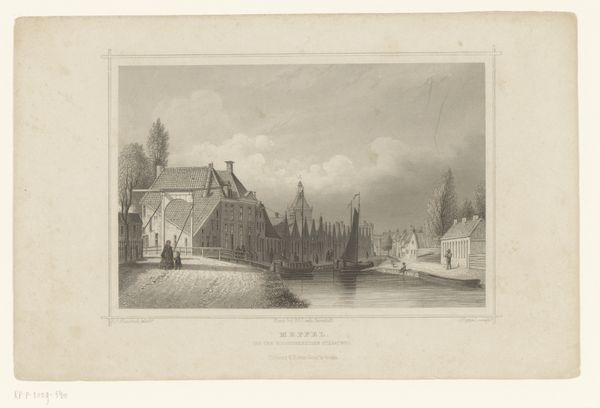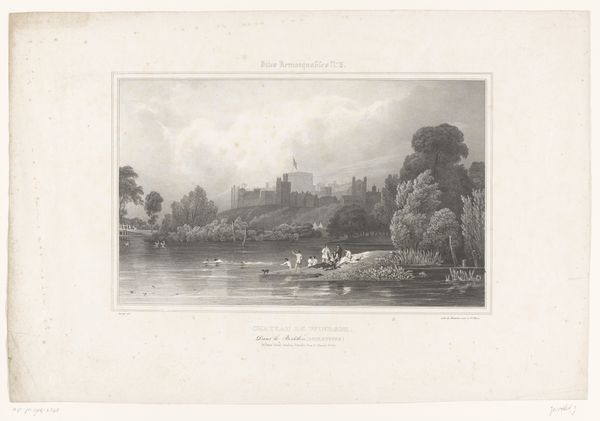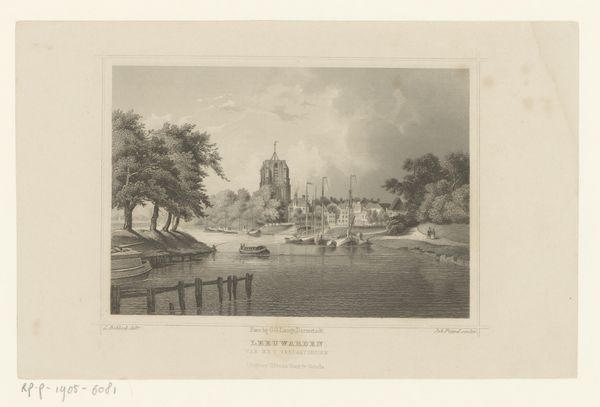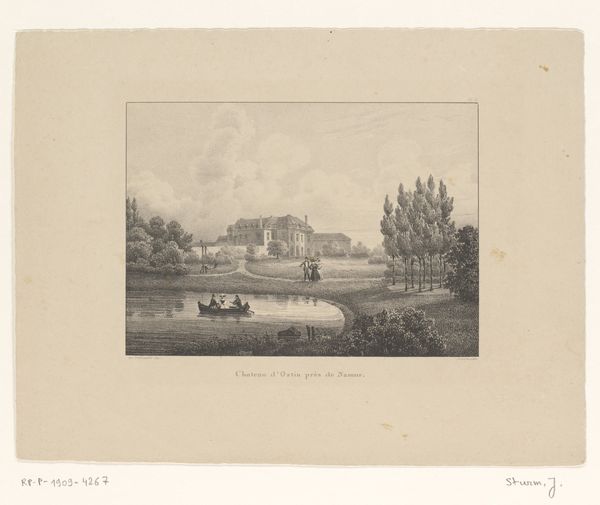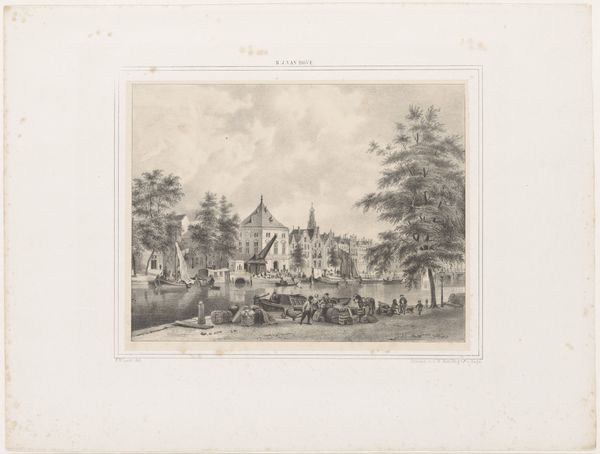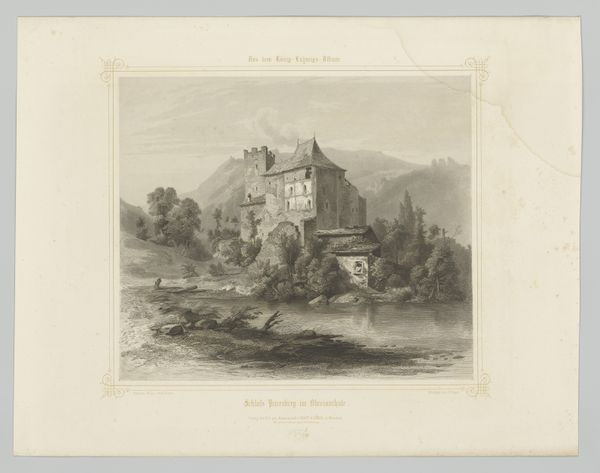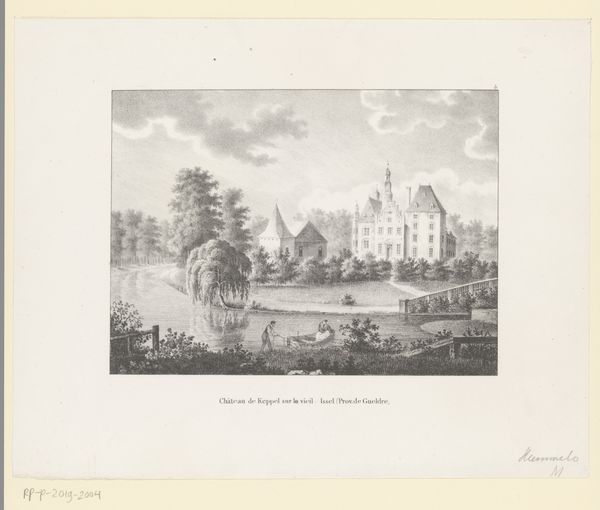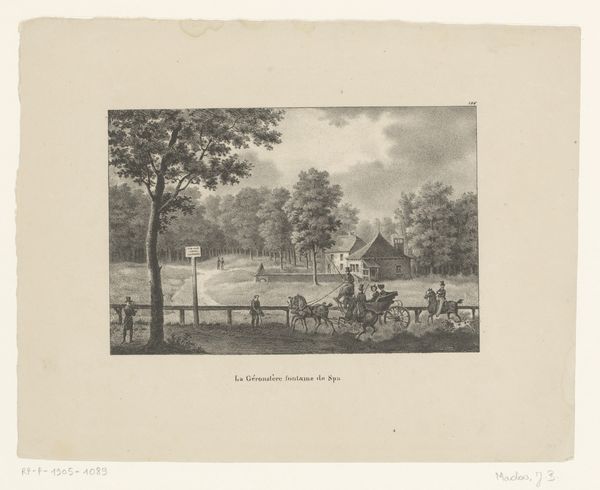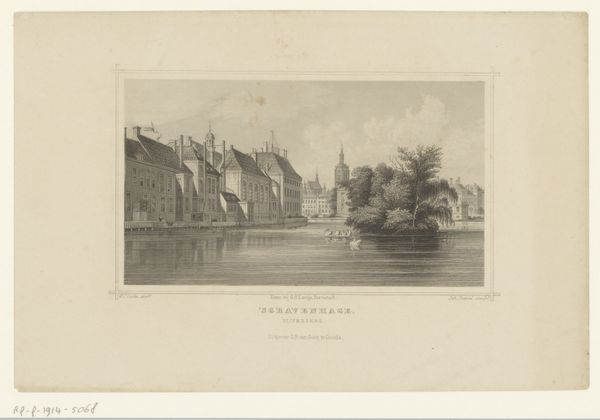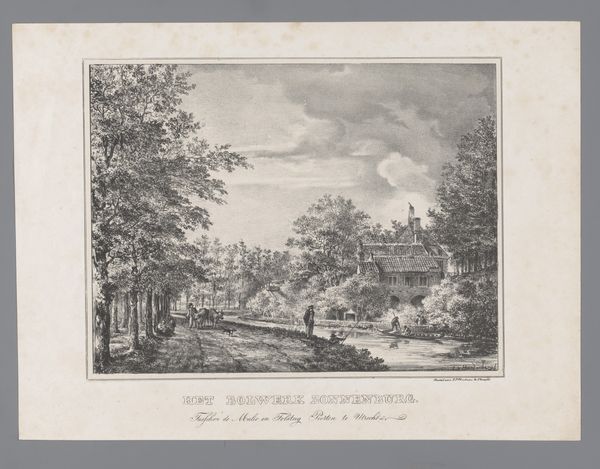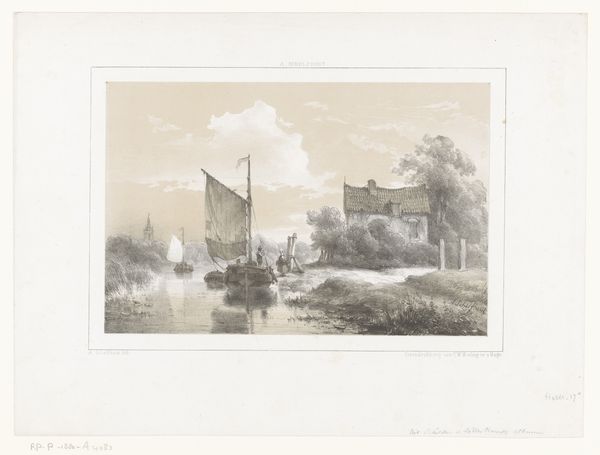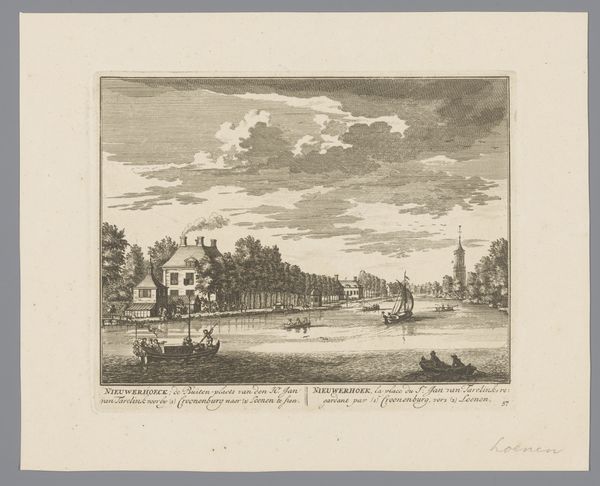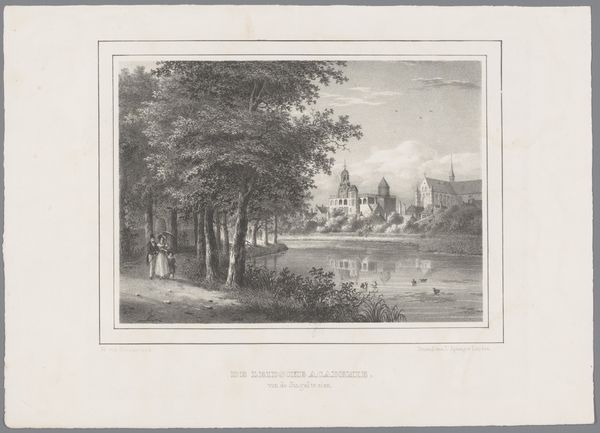
print, engraving
# print
#
landscape
#
cityscape
#
engraving
#
watercolor
#
realism
Dimensions: height 169 mm, width 254 mm
Copyright: Rijks Museum: Open Domain
Curator: This engraving by G. Hess, dating from 1855, depicts a view of the Westerkerk in Amsterdam as seen from the Keizersgracht. Editor: It's lovely. There's a quiet dignity to it. The details in the architecture are striking. It has an almost photographic quality, but rendered in a delicate way. Curator: It is quite meticulous, yes. The medium of engraving was perfect for capturing the intricacy of the architecture, allowing for mass production and dissemination of this cityscape image. What do you make of the urban context and the social activities happening along the canal? Editor: That's where it gets really interesting, isn’t it? It seems to show the church not as a solitary monument, but integrated within the flow of everyday life in 19th-century Amsterdam. People in boats, figures bustling along the canal – the print really brings to the forefront how religious institutions were connected to the daily lives of citizens. How might that have played out historically for citizens then? Curator: The print reveals the artist's sharp observational eye. The texture, light and shadows evoke atmosphere that adds richness to the depiction of 19th century Dutch urban experience. The method of printing means these images are democratised across communities of people too. How can an audience find the making processes relevant today? Editor: Well, it begs the question: how has this type of cityscape contributed to Amsterdam's cultural identity? Has it been employed as a tool for tourism? As propaganda for civic pride? Looking at the composition, the choice to depict the church from this particular angle perhaps aimed to convey its accessibility, emphasizing a certain relationship between the Church and the wider population. Curator: True. It showcases the Westerkerk not just as a religious symbol but also as part of the social fabric. By studying this print, we gain insights into the circulation of urban imagery and its effect on shaping public perceptions. The subtle layering of tones adds to the impact of scale and form of architecture through this image. Editor: Indeed. I'll walk away contemplating the legacy of Amsterdam itself – a city documented, distributed, and perhaps subtly, politically framed, one print at a time.
Comments
No comments
Be the first to comment and join the conversation on the ultimate creative platform.
